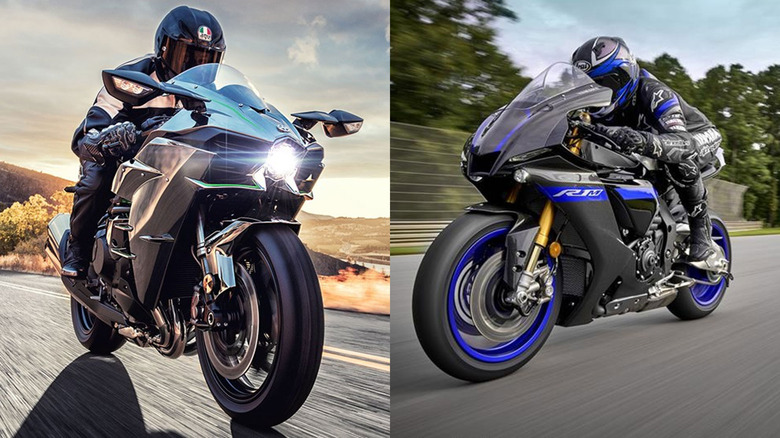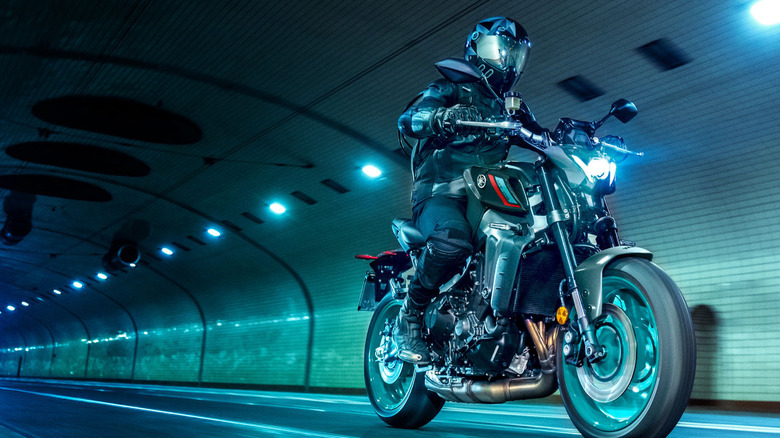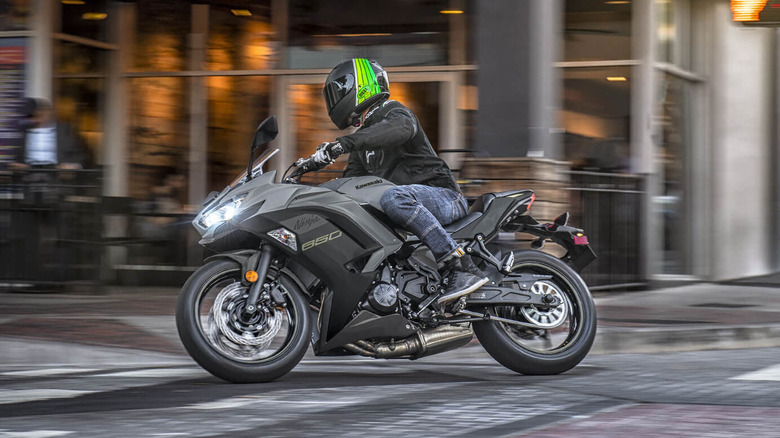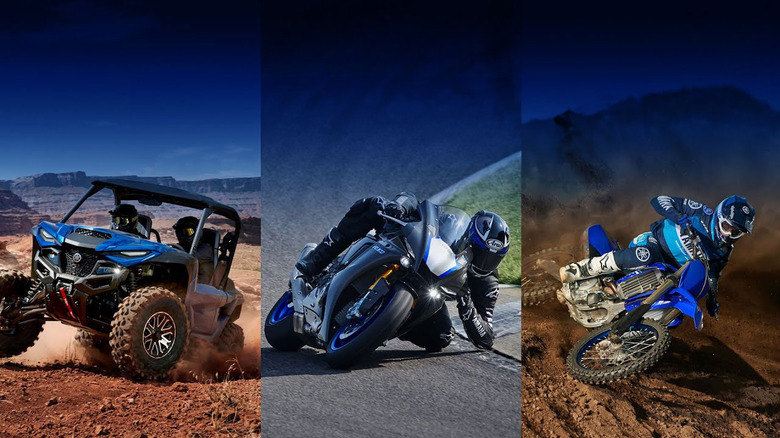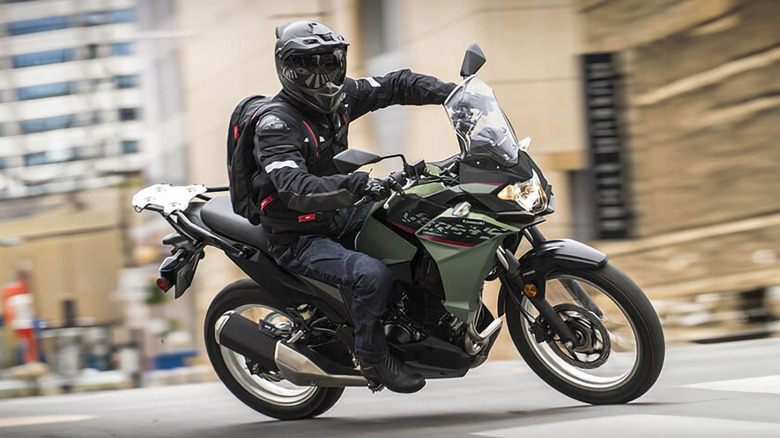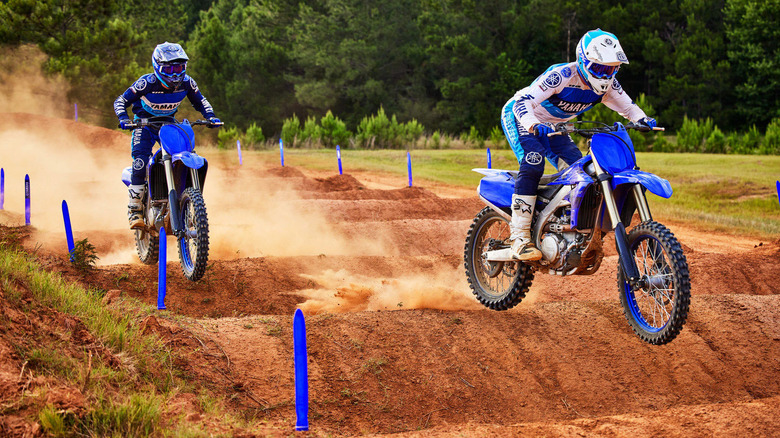Yamaha Vs. Kawasaki: How Do They Stack Up?
Yamaha and Kawasaki are two well-known and trusted Japanese brands when it comes to motorcycles, dirt bikes, or personal watercraft. Well-known among motorcycle and dirtbike enthusiasts, some variations of a Yamaha or Kawasaki bike will usually make it on most people's list of best motorcycle brands. However, what you may not have known is that both companies originated all the way back in the 1800s and have deep roots in Japanese history.
Though a lot has occurred over the past century, both companies have maintained its brand's reputations and product quality all that time, as they are still some of the most popular motorcycles purchased widely today.
Because both Yamaha and Kawasaki are trusted motorcycle, ATV, and watercraft brands, many compare the two directly. Though both make solid vehicles and there are a lot of parallels you can draw between the two companies, each product line is different, lending itself to be compared.
What is Yamaha?
Yamaha Motor Company is a Japanese motorcycle manufacturer that was originally established in 1955 and is now one of the leading manufacturers of motorcycles in the world, serving over 200 countries and regions. What may or may not surprise you is that the company actually has more historic origins in Japan, starting as a musical instrument manufacturer back in 1887. A few decades later, Yamaha Motor Company would be born as it separated from its musical roots.
Over its history, Yamaha has developed a multitude of vehicles. The first motorcycle it produced was the iconic 1955 YA-1 Motorcycle, a 125cc, two-stroke, single-cylinder street bike, which would be followed up a few years later by the 250cc YD1 Motorcycle. Later, the company would be involved in France's World Grand Prix, an early indicator of its close involvement in the competitive motocross and racing scenes. From there, it would slowly start to produce more products, from snowmobiles to personal watercraft.
Today, Yamaha has a fairly sizeable array of products, from well-known motorcycles, ATVs, and dirtbikes to snowmobiles, personal watercraft, and even golf carts. The latest financial data from the second quarter of 2023 showed that the company achieved a new sales record — 1,226.4 billion yen, or the equivalent of around eight and a half billion U.S. dollars in just the first six months of 2023 alone.
What is Kawasaki?
Kawasaki Motors is a Japanese motorcycle manufacturer that was first established in 1953 when it released its first KE-1 motorcycle engine. It graduated from producing engines to full motorcycle production in 1960 with the company's first motorcycle, called the B7. In 1968, the U.S. arm of Kawasaki changed its name to Kawasaki Motors Corp., U.S.A., and just a year later, the iconic Kawasaki H1 motorcycle would be released.
Though the motorcycle brand started in the 1950s, the company's legacy spans back to 1878, when Shozo Kawasaki, the company's founder, opened the Kawasaki Tsukiji Shipyard in Tokyo.
In 1973, Kawasaki released its first personal watercraft, the memorable JET SKI JS400 model. From there, the company would expand its reach to countries like Canada and the U.K. while establishing an assembly plant in the United States. This was followed by the company's first ATVs in the 1980s and leads up to today, where the company is known for its motorcycles, dirtbikes, ATVs, and watercraft.
Yamaha vs. Kawasaki product offerings
Both Yamaha and Kawasaki have vast product offerings, with a variety of models and variations for each of their vehicles. Each brand has motorcycles, ATVs, side-by-sides, e-bikes, and watercraft. Both also have a fleet of boats, snowmobiles, and golf carts. However, for most — it's likely they'll be drawing comparisons between the companies' dirtbikes, motorcycles, and ATVs.
According to a 2015 Consumer Reports evaluation of more than 11,000 motorcycle riders, both Yamaha and Kawasaki ranked among the highest in reliability out of major motorcycle brands. Yamaha was ranked at the top of the list for reliability, with only 11% of users reporting failures over a four-year period of ownership.
For Kawasaki, this was 15%, with other brands like Honda and Suzuki also topping out the list. For points of comparison, Harley-Davidson was at a 26% failure rate, and BMW was marked as having a 40% failure rate. This reflects what most Kawasaki and Suzuki owners say about their bikes — which is that they are reliable, durable, and easy and affordable to repair.
Yamaha vs. Kawasaki street motorcycle comparison
In terms of motorcycles, both Kawasaki and Yamaha have a few street bike variations. Kawasaki's premier track motorcycle is the Ninja H2R, a 998cc four-cylinder supercharged engine capable of reaching top speeds of nearly 250 miles per hour and costs around $58,100. Yamaha, on the other hand, has the SuperSport YZF-R1M, a 998cc, liquid-cooled inline four-cylinder engine motorcycle able to reach speeds of around 186 miles per hour and is significantly cheaper than the Ninja H2R at around $27,399.
Both companies have a fleet of affordable motorcycles at just about every range, with more affordable bikes in the $3,000 to $6,000 range, like the Kawasaki's Z125 Pro, its smaller 125cc road bike with 12-inch cast wheels, which has an MSRP of $3,649. Keep in mind that 125cc bikes will usually top out at around 60 to 70 miles per hour.
Another affordable option in the Ninja line is the Ninja 400, a great introductory four-stroke bike with a lightweight frame. The Ninja 400 starts at $5,299.
Yamaha also has affordable road bikes, with the cheapest road bike offering being the Yamaha YZF-R3, which starts at $5,499 MSRP and has a slightly weaker engine than the Ninja 400cc with a 321cc liquid-cooled, four-stroke engine. Yamaha also has a less powerful bike with their TW200, a 196cc air-cooled four-stroke engine that can also serve as a great introduction to motorcycles and costs $4,999.
Yamaha vs. Kawasaki offroad motorycle comparisons
Perhaps unsurprisingly, both Yamaha and Kawasaki have a pretty deep fleet of offroad motorcycles and dirtbikes available, with different models spanning a range of price points. The main Kawasaki offroad motorcycle is the KX line, which ranges from $4,249 in its youth 64cc two-stroke engine to the full-size motocross KX450SR with a 449cc four-stroke engine that costs $12,699.
Similarly, Yamaha has its own motocross and cross-country off-road bikes, starting with the youth YZ65, which is equipped with a 65cc liquid-cooled two-stroke engine and costs $4,899. The most powerful offroad bike for adults, the YZ450FX, starts at $10,199 and has a 450cc liquid-cooled four-stroke engine.
In terms of style, Kawasaki has more rounded edges and more design offerings in its KLX, KX, and hybrid sport/offroad KLR models, while Yamaha offroad bikes retain their distinctive Yamaha look. There are multiple bikes across all price ranges and ccs, giving a wide variety regardless of the direction you go in.
Ultimately, comparing Yamaha and Kawasaki is like comparing two solid Japanese car brands like Toyota and Honda. You can largely expect quality and durable products, and Kawasaki and Yamaha are trusted among many motorcycle enthusiasts. While everyone will have their opinion on the best brand (some may even say avoid both brands), the best product will come down to what you're looking to buy and your budget.
